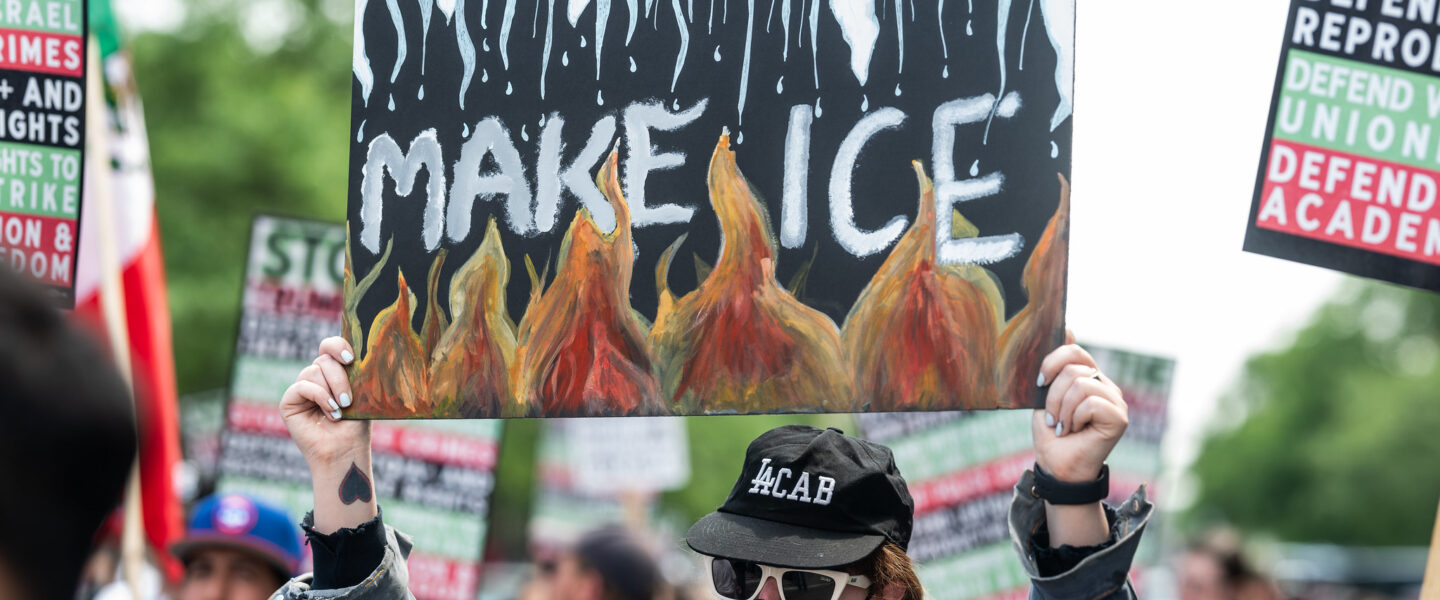Newsom Calls on Hegseth to Rescind ‘Unlawful’ National Guard Deployment Order
Donald Trump is itching to escalate the situation in Los Angeles by throwing the National Guard and possibly US troops into the mix. Gov. Gavin Newsom (D) is telling him to butt out.
|
Listen To This Story
|
On Saturday night, citing a seldom-used law, President Donald Trump authorized the deployment of 2,000 National Guardsmen to the city with the goal of punishing protesters who dared to speak out against the deportation operations that ICE was carrying out there.
However, California officials are not only saying that this show of force is unnecessary — and intended to escalate a situation that the city’s law enforcement agencies have under control — but also that Trump’s order is illegal.
“At present, law enforcement authorities from the City and County of Los Angeles are safeguarding public safety, and, as demonstrated by the robust law enforcement response yesterday evening to protect federal facilities, local law enforcement resources are sufficient to maintain order,” wrote David Sapp, Newsom’s legal affairs secretary.
The situation on the ground this weekend backs him up. The protests are fairly small, largely nonviolent, and the property damage limited. Therefore, calling in the National Guard seems like a completely unnecessary escalation. Of course, maintaining order is probably not the point.
Instead, Trump seems intent on creating a crisis to advance his authoritarian goals.
In this case, California has always been a thorn in his side and, by pretending that protests there are spiraling out of control, he can ratchet up pressure on senators to pass his “big, beautiful bill” and the additional billions of dollars for defense and border security it includes.
Newsom is hoping that the courts will put a stop to this ploy.
In the letter, Sapp notes that the law Trump bases his action on does not actually allow him to bypass the governor.
While it allows the president to federalize a state’s National Guard if the country is being invaded, if there is a rebellion (or a danger of one), or if he is unable to execute the law with “regular forces,” it seems clear that none of these triggers applies in this case.
Furthermore, the law also states that the respective orders “shall be issued through the governors of the States.”
However, Sapp states that the memorandum that the administration sent to the state’s adjutant general to inform him that 2,000 of his National Guard troops would be federalized for 60 days did not meet that second criteria either.
“[The] Department of Defense did not transmit this directive to the Office of the Governor, nor was it approved or ordered by the Governor of California,” he wrote. “This directive is also inconsistent with the President’s memorandum, which anticipates ‘coordinat[ion] with the Governors of the States’ in identifying and ordering units at the National Guard into federal service.”
Therefore, Sapp calls on Hegseth to rescind that order.
“There is currently no need for the National Guard to be deployed in Los Angeles, and to do so in this unlawful manner and for such a lengthy period is a serious breach of state sovereignty that seems intentionally designed to inflame the situation, while simultaneously depriving the State from deploying these personnel and resources where they are truly required,” he stated before asking Hegseth to take back the order.
Based on everything we have seen, it seems unlikely that this is going to happen, in which case California is expected to take the issue to the courts.

